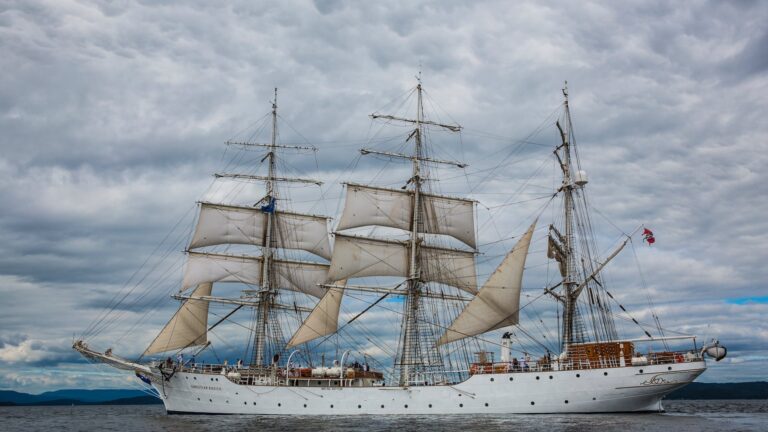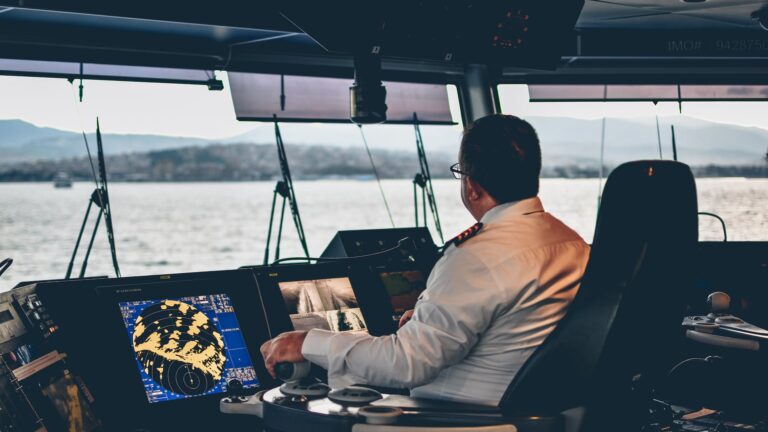How did ancient seafarers sail against the wind?
- Introduction
- History of Ancient Seafaring
- Ancient Navigation Techniques
- Use of the Wind and Sails
- Role of Oars and Rowers
- Sailing Downwind with the Wind
- Rowing Against the Wind
- Mediterranean Sea Sailing Traditions
- Modern Use of Ancient Techniques
- Conclusion
- Sources
How Did Ancient Seafarers Sail Against the Wind?
Sailing is an ancient art, as old as human exploration itself, and seafaring has been a major part of human history since before recorded time. As such, it should come as no surprise that ancient seafarers had a variety of techniques to both use and combat the wind at their disposal in order to get to their destination safely and efficiently. In this article we will explore how they sailed against the wind in order to reach their destination without succumbing to its power or being dragged off course by strong winds or currents.
Introduction
Since mankind first ventured out on boats, sailing has been an important part of our journey across the sea, whether for trade or exploration purposes. Many ancient civilizations were heavily reliant on sailing for their maritime travel needs and developed highly sophisticated technologies that allowed them to traverse far distances with relative ease compared to other forms of transportation available at the time such as walking or horseback riding. As such, it is no surprise that they had a variety of tools in their arsenal to help them combat the wind when needed, including oars and sails that allowed them to move in different directions depending on which way they wanted to go – against or with the wind!
History of Ancient Seafaring
The earliest seafarers were likely those who lived on islands surrounded by water, such as those found in Polynesia, who used simple rafts made from logs lashed together for navigation across open seas for fishing and trading purposes during pre-historic times in 5000 BC or earlier . As these civilizations developed more advanced sailing skills, ships were built with advanced materials such as wood, sails made from animal hides and cotton fabrics, as well as rudders for steering . With these improved technologies came a greater understanding of how wind works and how it can be used for navigation purposes by using sails – a technique still used today!
Ancient Navigation Techniques
Navigation techniques used by ancient seafarers included looking at stars and constellations at night (known as celestial navigation) as well as observing landmarks during daylight hours (known as terrestrial navigation). However, these techniques were limited by weather conditions such as fog or rain which could obscure visibility making it difficult to navigate accurately . Therefore sailors had to rely heavily on their ability to read the weather conditions around them in order to know what direction they should take in order to reach their destination safely – including knowing when they should sail against the wind if necessary!
Use of The Wind And Sails
Wind was essential for sailing since it provided forward propulsion power that allowed boats to move through water quickly without having to row manually . Ancient sailors relied heavily on sails since they were able to capture even small amounts of wind energy which helped propel boats forward . This was done using various sail configurations such as square-rigged sails (which were triangular shaped) and lateen sails (which were shaped like an isosceles triangle) depending on what type of boat was being used . These sails could be adjusted according to changing wind directions so that sailors could harness its energy even if it was blowing against them!
Role Of Oars And Rowers
In addition to using sails for propulsion power, ancient seafarers also relied heavily on oars which could be used when there was no wind available or when sailing against it . Oars gave sailors greater control over their movements since they could adjust their speed depending on how hard they pulled while rowing and also allowed them greater maneuverability when navigating tight spaces or navigating close-by obstacles such as rocks or coral reefs . This technique was especially useful in areas where there was not enough wind or strong currents making it difficult for boats powered solely by sail power alone!
Sailing Downwind With The Wind
When facing downwind conditions – where winds are blowing in the same direction you want your boat to go – ancient captains would use a combination of sail power and oar power in order gain maximum speed . The square-rigged sail configuration would be adjusted so that it caught maximum air pressure from behind while oars provided additional thrust from below giving boats extra speed needed push forward downwind quickly . This technique was especially useful for long voyages across large bodies water like oceans because sailors could make use of prevailing winds which changed direction slowly over time allowing them cover larger distances than if they had gone upwind instead!
Rowing Against The Wind
When sailing against the wind – where winds are blowing in opposite direction you want your boat go – ancient captains also used rowers who were responsible for physically rowing the boat in proper direction whenever winds would not allow it sail. This method continued quite some time Mediterranean world although eventually replaced more advanced technologies like steam powered engines later centuries . It still remains one most effective ways moving when facing upwind conditions today although often combined with modern technologies like motorized propellers give sailors even greater control over their movements . ### Mediterranean Sea Sailing Traditions The Mediterranean Sea has long been home many different cultures , each with their own unique traditions when comes sailing . For example , Greek captains often employed a type “ zig zag ” maneuvering technique known “ periplous ” which involved tacking back forth between two points so reduce distance traveled upwind , this technique still practiced today by experienced captains looking optimize performance under certain conditions . Likewise , fishermen around Ionian Islands commonly employed technique known “ crabbing ” whereby short bursts rowing would propel boat forward against headwinds enabling them travel farther distances than otherwise possible . ### Modern Use Of Ancient Techniques Today , many modern technologies have been adopted help improve upon traditional sailing techniques , however many aspects remain same . For instance , sails are still main source propulsion power used vessels today although often reinforced synthetic fabrics much stronger than animal hides used past . Similarly , large vessels may employ motorized propellers provide additional thrust needed move upwind although rowers are rarely seen except smaller craft due difficulty navigating larger boats using just oar power alone . Lastly , various maneuvers like zig zagging periplous are still utilized experienced captains optimize performance under certain conditions . ### Conclusion In conclusion , ancient seafarers had variety tools disposal help them combat winds whenever necessary . They relied heavily on combination sail power oar power achieve maximum speeds either downwind upwind conditions while also employing unique techniques like zigzagging periplous optimize performance under certain conditions . Although modern technology has come long way since then , many traditional sailing techniques are still utilized today experienced captains looking maximize efficiency out sea ! ### Sources 1) https://www.thoughtco.com/ancient-navigation-methods-1779095 2) https://www.britannica.com/technology/ancient-ship 3) https://www3dshipdesignerseasacademycom/2017/02/17/navigation-of-ancient-ships 4) http://www3dshipdesignerseasacademycom/2017/05/29/sails 5) http://www3dshipdesignerseasacademycom/2017/04/18/oar 6) https://www2vanderbiltedu/voyages//OceansandSeas2004 7) http://www3dshipdesignerseasacademycom/2017/04/18/oar 8 ) https://www2vanderbiltedu//OceansandSeas2004 9 ) http://www3dshipdesignerseasacademycom//2017//05//29//sails 10 ) http://www3dshipdesignerseasacademycom//2017//06//03//zizag 11 ) https://www2vanderbiltedu//OceansandSeas_2004 12 ) https://enwikipediaorg//wiki//Steamboat 13 ) http://www3dshipdesignerseasacademycom//2018//08//15//motorized–propellers 14 ) http://greeceatyourservicedeckhandtrainingnetau //2018 //06 //30 //greek–periplous 15 ) https://enwikipediaorg //wiki //Ionian–Islands







